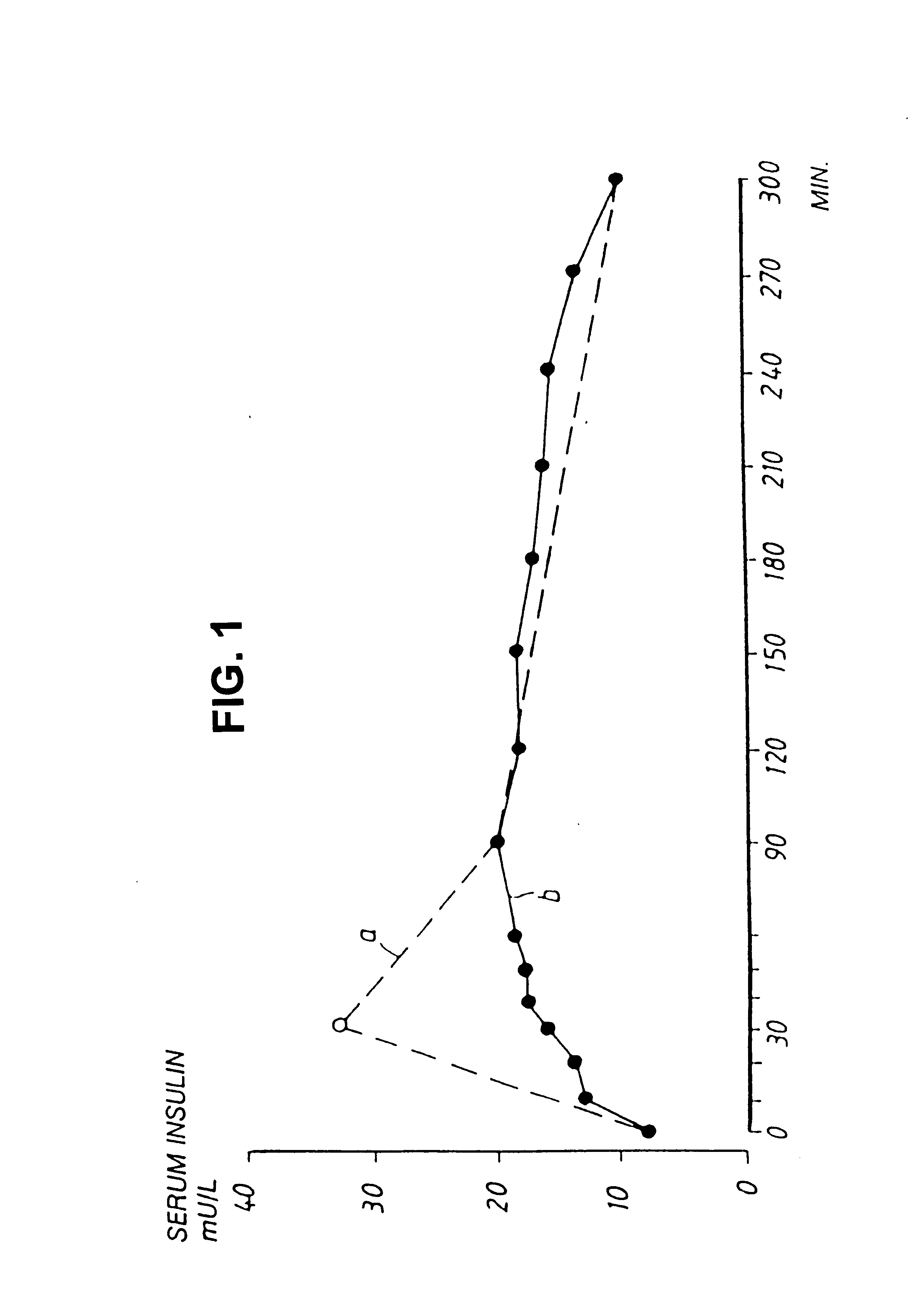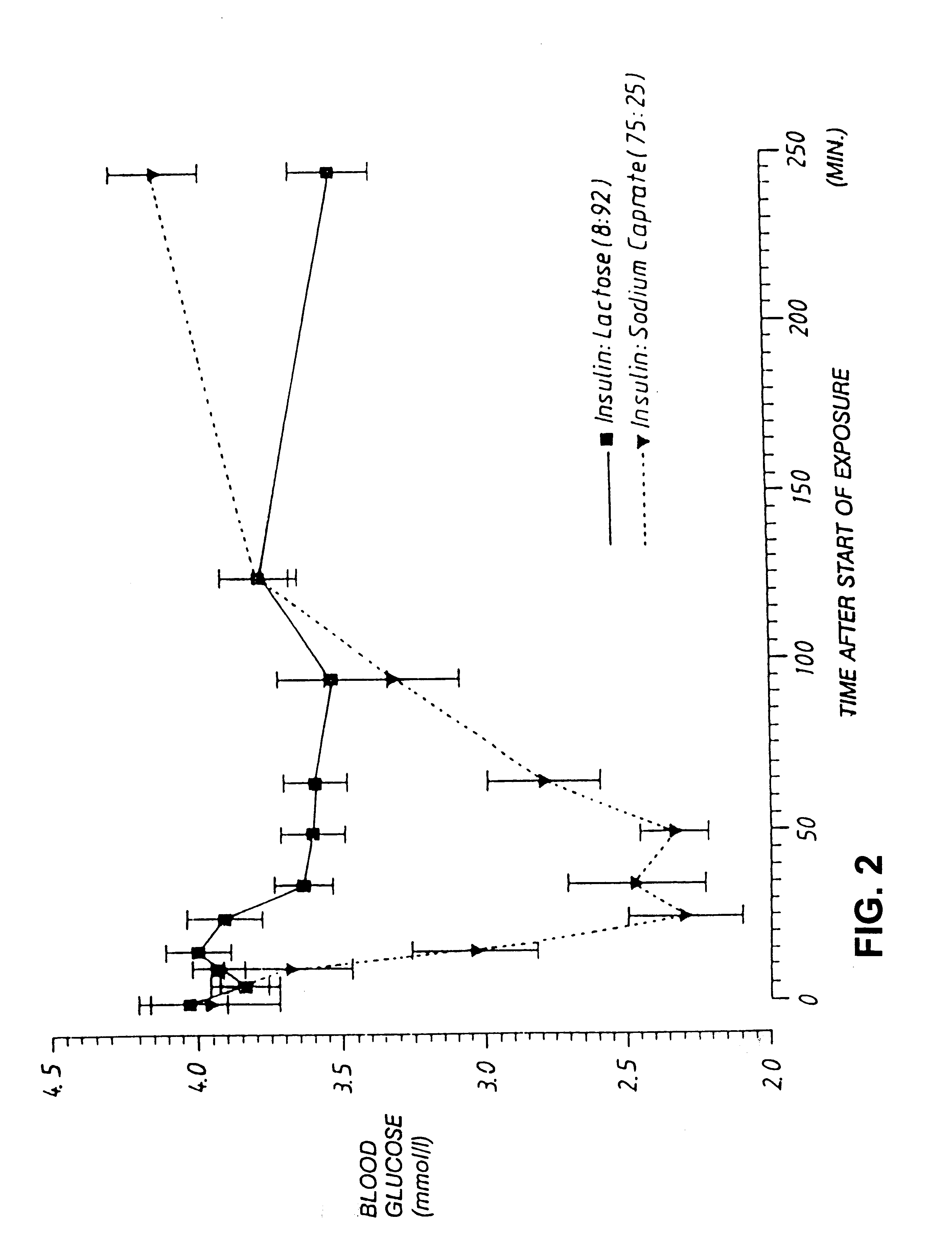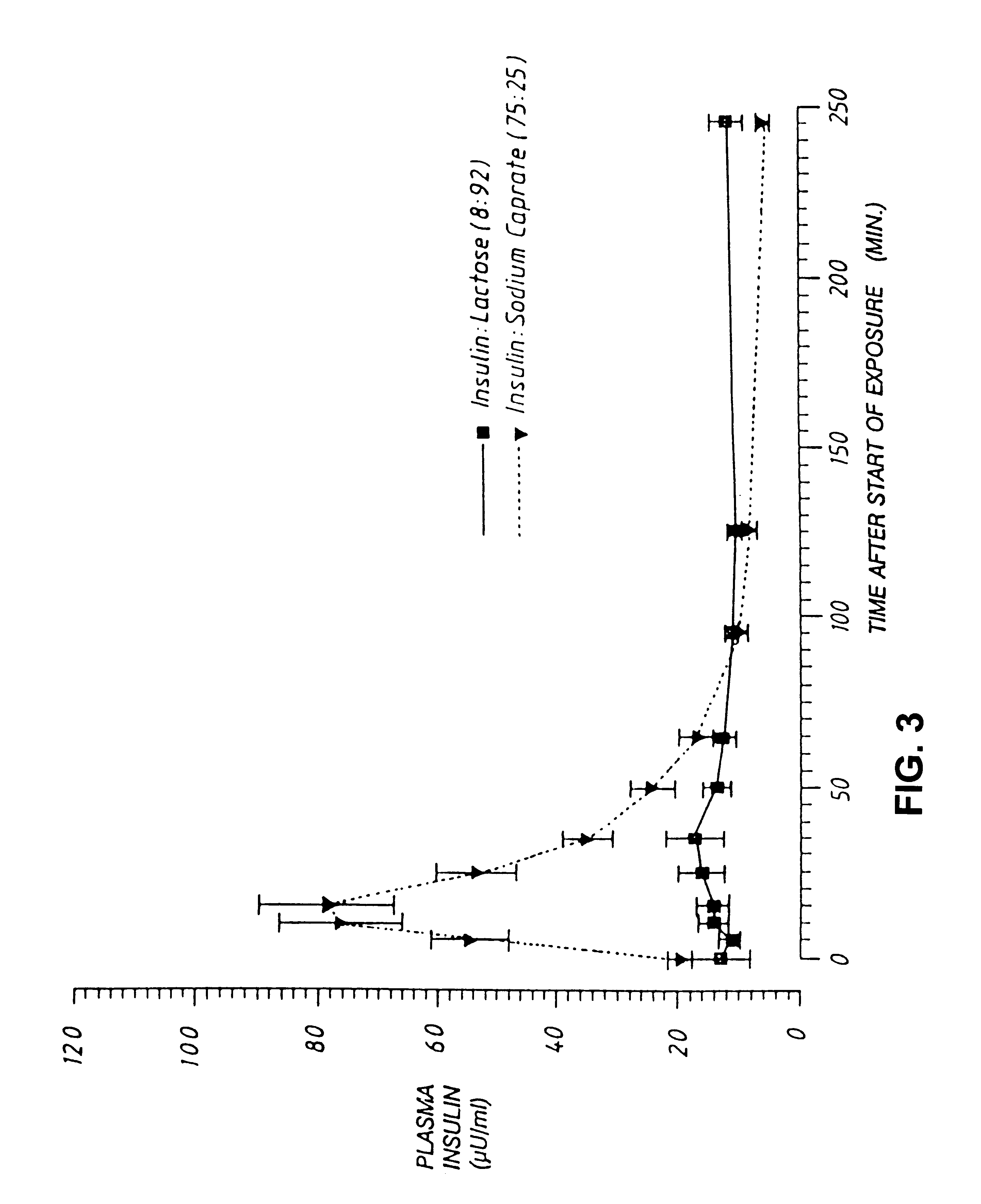Systemic administration of a therapeutic preparation
a systemic administration and therapeutic preparation technology, applied in the field of systemic administration of therapeutic preparations, can solve the problems of abnormally low blood glucose levels, dangerous and possibly fatal, blood glucose levels, etc., and achieve the effects of simple and painless delivery of insulin dosage, easy entry, and high deposition
- Summary
- Abstract
- Description
- Claims
- Application Information
AI Technical Summary
Benefits of technology
Problems solved by technology
Method used
Image
Examples
example 1
[0056]9.75 g of semisynthetic human insulin (Diosynth) and 250 ml water is added to a beaker. The pH is lowered to 3.4 with 1 M HC1 and then raised to 7.4 with 1 M NaOH in order to dissolve the insulin. 3.25 g sodium caprate (Sigma) is added and the pH is again adjusted to 7.4. The solution is, stirred, and when the solution is clear or weakly opalescent, it is concentrated by evaporation at 37° C. in about 2 days. The obtained solid cake is crushed and then sieved through a 0.5 mm sieve. The powder is micronized in a jet mill to particles with a mass median diameter of about 2 μm. This micronized powder, containing 75% insulin and 25% sodium caprate by weight, is then filled into an inhalation apparatus (Wright Dust Feed Mechanism) and delivered to animals.
[0057]The results from an inhalation study in two non-diabetic dogs are summarized in the tables below. Blood glucose and plasma insulin values were measured at the specified time intervals.
TABLE IBlood sampletime after endof exp...
example 2
[0059]A preparation containing semisynthetic human insulin and sodium caprate (75:25 by weight) was prepared as described in Example 1, and introduced into the lungs of five dogs. A control preparation containing insulin and lactose (8:92) but no enhancer was also prepared, and introduced into the lungs of four dogs. The total insulin dose for each dog was 1 U / kg. The effect of each formulation on plasma insulin levels and blood glucose levels was determined at various time points and the results are illustrated in FIGS. 2 and 3. It was found that, while the control formulation containing no enhancer produced essentially no change in plasma insulin levels, the formulation containing both insulin and enhancer produced a rise in plasma insulin levels from about 20 μU / ml at time zero to about 80 μU / ml 15 min. after inhalation of the powder. Likewise, the control animals registered a maximal drop in blood glucose of about 0.5 mmol / l following inhalation of insulin without enhancer, whil...
example 3
[0060]Two formulations containing semisynthetic human insulin, sodium caprate and lactose combined in the ratios of 50:25:25 and 4:4:92, respectively, and a third formulation containing human insulin and sodium caprate 75:25, were prepared as described in Example 1; in the formulations containing lactose, solid lactose was added to the insulin / sodium caprate solution prior to final pH adjustment and drying. In the experiments shown in FIGS. 4-7, each of the three formulations was tested in two dogs, at the indicated dosage levels. Plasma insulin and blood glucose were measured at the indicated times following inhalation of the insulin formulation.
PUM
| Property | Measurement | Unit |
|---|---|---|
| diameter | aaaaa | aaaaa |
| diameter | aaaaa | aaaaa |
| diameter | aaaaa | aaaaa |
Abstract
Description
Claims
Application Information
 Login to View More
Login to View More - R&D
- Intellectual Property
- Life Sciences
- Materials
- Tech Scout
- Unparalleled Data Quality
- Higher Quality Content
- 60% Fewer Hallucinations
Browse by: Latest US Patents, China's latest patents, Technical Efficacy Thesaurus, Application Domain, Technology Topic, Popular Technical Reports.
© 2025 PatSnap. All rights reserved.Legal|Privacy policy|Modern Slavery Act Transparency Statement|Sitemap|About US| Contact US: help@patsnap.com



